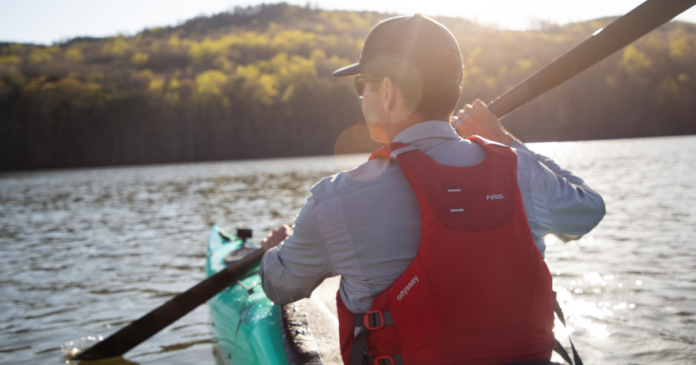One of the joys of flat-water paddling is that you don't need proper technique in order to have a good time. I would argue, first and foremost, that the most important thing is to simply unplug from the rat-race, get out on the water, and have a genuine outdoor experience. By developing your kayak paddle strokes, you will open several doors that will only serve to enhance your adventures.
If you take the time to hone your craft, you'll be able to paddle more comfortably, which will allow you to paddle for longer periods of time, which will then help you to progress as a paddler. For those reasons, I'm here to offer you a few tips that I hope you can practice the next time you hop in the cockpit.
Kayaking Paddle Tips to Improve Your Technique
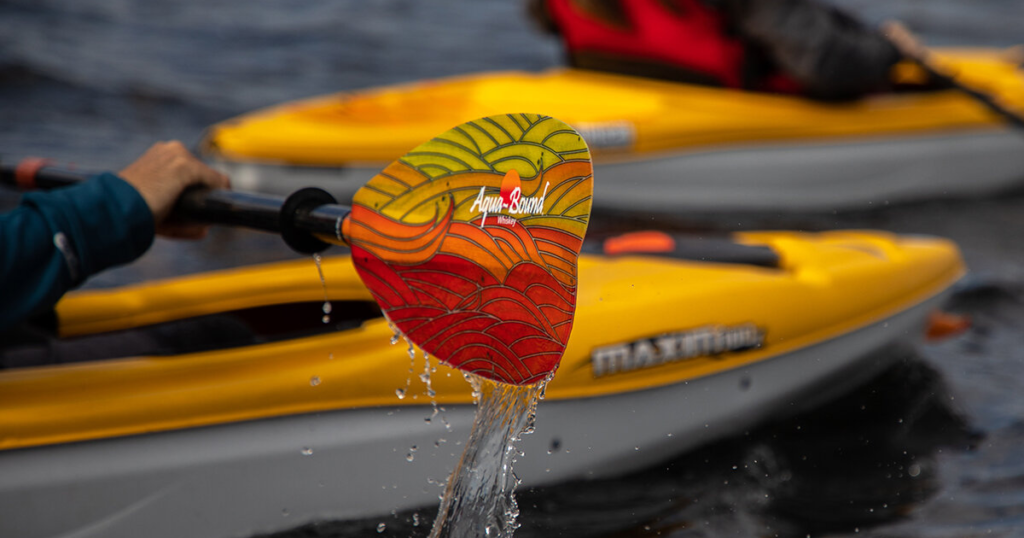
What is the correct way to hold a kayak paddle?
The first thing you'll want to do is make sure your hands are equidistant from the blades. Next, if you raise your arms up in faux-celebration, resting the paddle on your head, then there should be a roughly 90-degree angle bend in your elbows. This ultimately establishes a slightly wider than shoulder width grip.
Side note: drip rings placement
I've seen people reposition these to act as a marker for their hand placement. Not a bad concept. These are actually meant to prevent the water from your blade from dripping down the paddle and up your arm. Trust me, this gets annoying after a while. Ideally, you'll want those drip rings positioned closer to the actual blade, but not so close that they dip into the water themselves, which will negate the effect. I recommend about a hands-width between your blade and the ring.
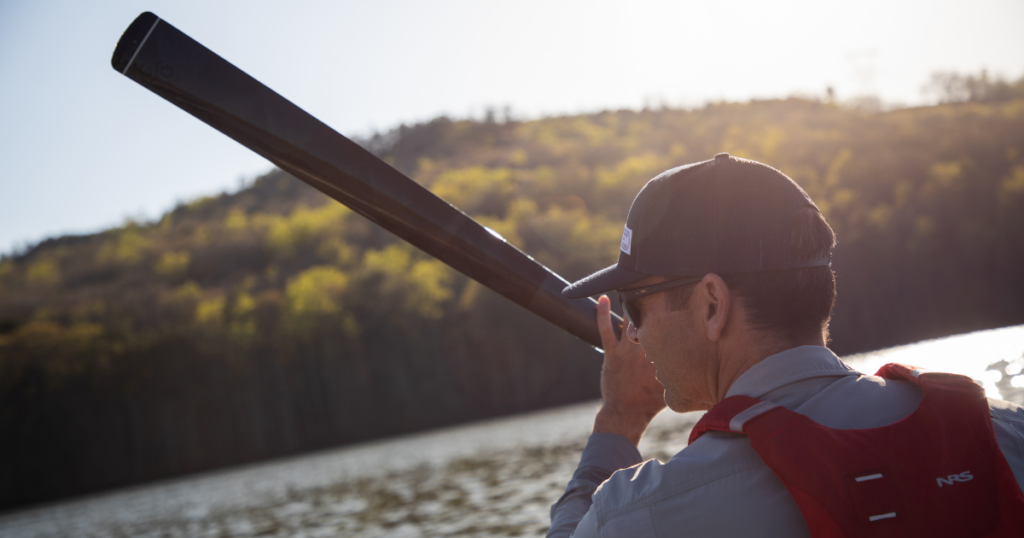
How should I grip my paddle while kayaking?
You'll want to have a nice relaxed grip on your paddle. No death grips! Your arms will get tired in the short-term if you overdo it. You might develop tendonitis in the long-term and all throughout you'll be plagued by blisters. So take a breath, remember what that overzealous yoga-friend taught you about being Zen, and just enjoy the paddle.
Side note: this time on pressure points and callus building
If you're just getting into paddling then there will inevitably be a period of callus building. This is particularly true in the pocket between the base of your thumb and index finger. It's a good idea to pack a little first-aid kit in order to treat those blisters or hot spots as they form. You can also be proactive and put a bit of duct tape over that area, in order to reduce the friction on your baby skin. Don't worry, in time you'll develop those sweet lumberjack hands.
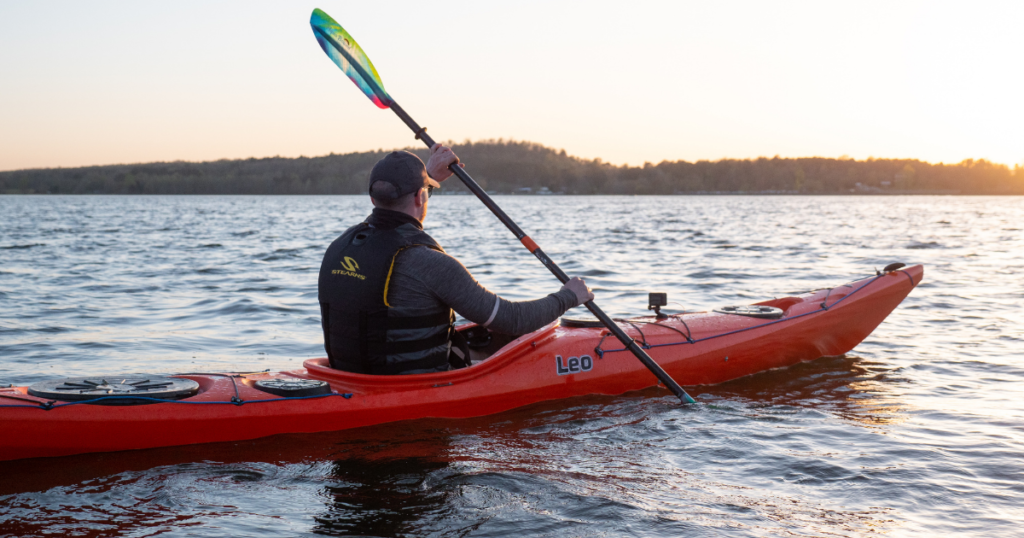
Why are paddles angled?
Some paddles can be set to a certain “twist” or “feather.” Both of these terms refer to the offset, or angle of the paddle blades relative to one another. This is done so that while one blade is in the water, the other slices through the air with the narrow side of the blade. This is designed to slice through the wind rather than hitting it with the full, flat fin. If you're battling the wind, or racing another boat and need to claw for those fractions of a second, then having a twist can be effective for impactful kayak paddle strokes.
If you're just getting started, I think it's best to leave your paddle at a zero-offset / angle / twist / feather. I actually use a zero-offset paddle myself. 30 years ago, when I was just starting out, I initially had a 90-degree twist. Eventually I backed it off to a 60, and then a 30, 15, and finally I ditched it altogether.
Selecting a twist in the paddle angle
If you decide to use some degree of a twist in your paddle, then you will need to designate your dominant hand as the control hand. I'm right-handed. So this will always stay in a fixed position, with a still relaxed, but sturdy grip. My left hand will remain relatively loose throughout so that my right hand can twist the paddle between strokes, ensuring each blade goes into the water nice and flush. The left hand can then simply pull the paddle through; it doesn't need to clamp down in order to get an effective stroke (Oh the unavoidable kayaking innuendo… stay with me folks).
At the end of the day, there's no right or wrong approach when it comes to angling your paddle. Some people feel very strongly about using a certain twist, while I tend to think it's easier to at least start without any.
Side note: sand in kayaks sucks!
Do whatever you can to avoid getting sand in your boat. Bang out your shoes and paddle, bring a sponge with you to mop it up as it accumulates, etc. It's coarse, it's annoying, and it can end up being a huge pain in your butt.
Tips on kayak paddling technique
I won't go too deep into the weeds today. If you're interested in a video on different paddling styles, check out my 3 Essential Strokes video. For now, what I'll focus on is a few techniques that will apply to any style.
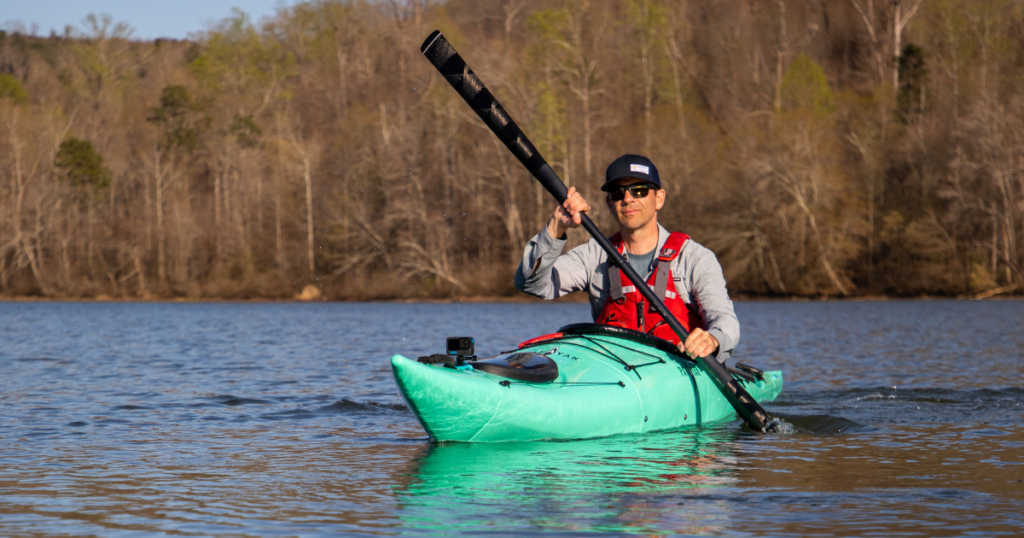
What muscles do you use when paddling?
One tip to better kayak paddle strokes is to use torso rotation. This is all about bringing your core into play to alleviate the load on your arms. Don't get me wrong, you will still get a great arm workout whenever you go out paddling, but incorporating your larger core muscles will help you increase both your power and endurance.
A quick example would be when you want to turn the kayak using a sweep stroke. Don't just use your arms to push the water away. Instead, turn your upper body and then as you're pushing the water with your paddle, simultaneously unwind your torso. Try this, to some degree, with every stroke. Even while paddling straight, you can reach your shoulder forward and implement some of that torso rotation with each stroke.
Use your legs when kayaking
Now that you've got your torso working in conjunction with your arms, don't forget about your legs. The way you get your legs into the mix is to push off the foot-brace on that same side that is making the stroke. This provides yet more power by allowing your core to establish even more leverage.
Sidenote: Bring sunglasses
Always bring some good shades with you. Even with a hat on, the reflectivity of the water can hit you with a constant glare that will cause headaches, tension in your face and neck, and problems with your eyes in the long-run. Polarized lenses will help you to spot rocks, logs, and anything else hazardous or just generally interesting that lies beneath. Anglers know to rock the shades since it helps them drop a line where the gettin's good.
Stroke angle when kayaking
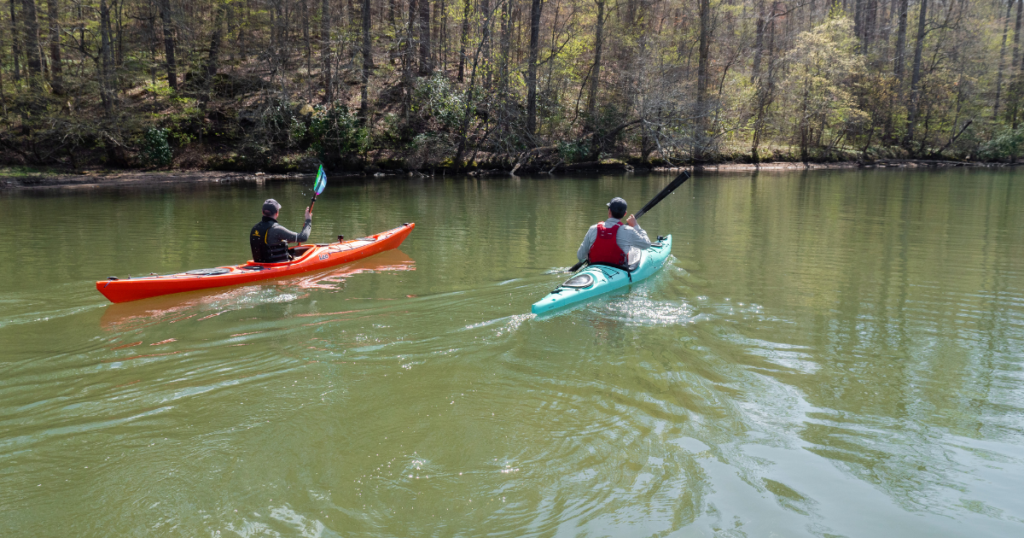
High-angle vs low-angle paddle, which one fits you?
Low-angle paddles
A low-angle paddling stroke is more relaxed and sustainable. There are paddles that are specifically designed to be more relaxed and sustainable. Greenland paddles have blades that are long and narrow, which allow them to reach out further in the water. The Greenland paddle blades contact the water further from the kayak, some of the kinetic energy is translated into lateral movement. Therefore, this isn't as efficient of a kayak paddle stroke in terms of energy transfer. It is much more efficient in terms of conserving your own energy for the journey.
High angle paddles
High-angle paddles tend to have fatter blades because during a high-angle stroke it will strike steeply, near to the side of the kayak. While the other hand locks in at about eye-level. During a high-angle stroke, more of your energy is transferred into forward momentum. This comes at the cost of your own energy expenditure. Again, there's no right or wrong answer, it simply depends on what you're trying to do.
So there you have it, a handful of suggestions to help you dial in your paddling technique. These should help you to be more efficient, powerful, comfortable, and enthusiastic while kayaking. If you enjoyed this article and want to delve into more tips, reviews, and adventures, check out PaddleTV.
Disclaimer: these are affiliate links in which Ken Whiting earns a small commission with no additional cost to you. Using the links of purchasing is a great way to show your support. Thanks!



